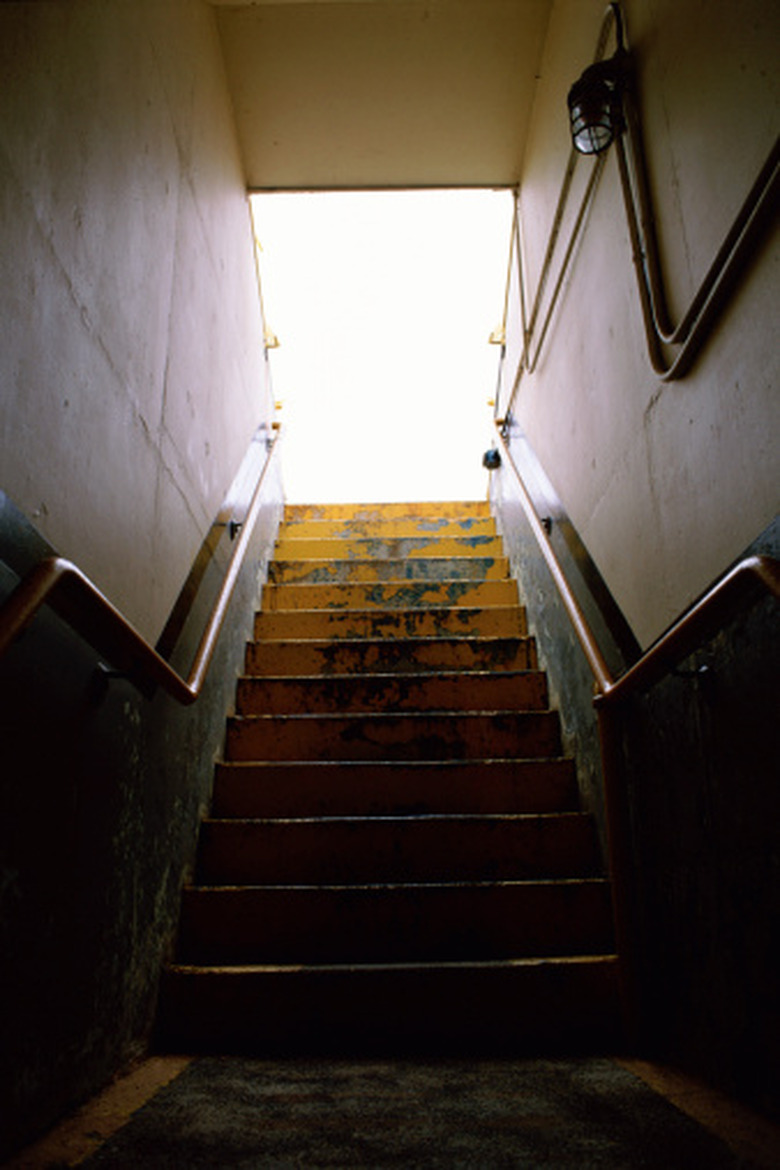How To Clean Up From A Sewer Backup
Things Needed
-
Rubber gloves
-
Face shield
-
Wet/dry vacuum or pump
-
Trash bags
-
Garden hose
-
Broom
-
Dustpan
-
2 buckets
-
Disinfectant cleaner
-
Rags
-
Mop
-
Bleach
-
Scrub brush
-
Fan
-
Dehumidifier
-
Anti-bacterial soap
-
Nailbrush
Sewage backup in the home is a health hazard. A backup can happen when the septic system overflows or when there is a clog in the city sewer lines, broken pipes or any one of a number of other causes. When it happens, you must take steps to clean it up as quickly as possible. Raw sewage presents a number of problems including, most importantly, health hazards. These hazards include viruses, bacteria and parasites. When cleaning, work on one area at a time so the procedure goes smoothly.
Step 1
Contact utility companies to turn services such as gas and electric off. This is necessary when the sewage backup occurs in the basement, and appliances, such as a gas furnace, or electrical outlets are affected by the backup. Put on safety equipment such as rubber gloves and a face shield.
Step 2
Remove any water from the sewage backup using a wet/dry vacuum. If the level of water is significant, use a pump to remove it. Sort any belongings in the area into categories consisting of things you need to discard and things that you can clean. You must throw away items such as cosmetics, books, toys and carpeting. Place in trash bags and remove from area. Things that you can clean include clothing, canned goods, furniture and other similar items.
Step 3
Spray down the area with fresh water from a garden hose if sludge from the sewer backup remains on the walls. Remove the water again if necessary using the wet/dry vacuum or pump. Clean solids off the floor using a broom and dustpan. Fill one bucket with water and a disinfectant cleaning solution according to label instructions. Fill the second bucket with clear water. Wash down walls with rags and the cleaning solution. Rinse walls thoroughly with fresh water. Start in the farthest area from the door and work your way back.
Step 4
Clean floors with a mop, bucket and the disinfectant cleaning solution. Change water continuously throughout the cleaning process. After you finish cleaning, kill bacteria on all walls and floors with a scrub brush dipped in a solution of 1/2 cup bleach to 1 gallon water. Open all windows in the area of sewage backup. This will help the room to dry and air out. Set up a fan and dehumidifier to assist in drying.
Step 5
Take a hot shower after the cleanup is complete and wash all parts of your body thoroughly using antibacterial soap. Use a nailbrush on your fingers to make sure they are clean. Do not eat, smoke or drink until you do this to prevent spreading bacteria or viruses. Contact utility companies after the cleaning is complete to inspect appliances to make sure they are safe before restoring gas and electrical power to the house.
References
- Calgary.ca; Cleanup After Sewer Backup; City of Calgary; 2007
- Washington State Department of Health: Cleaning up a Sewage Spill
- Arlington Water Utilities; Cleaning up After the Flood or Sewage Backup; Arlington Water Authority; October 2006
- Colorado Department of Public Health; Cleaning up After Sanitary Sewer Overflows; State of Colorado; October 2000
